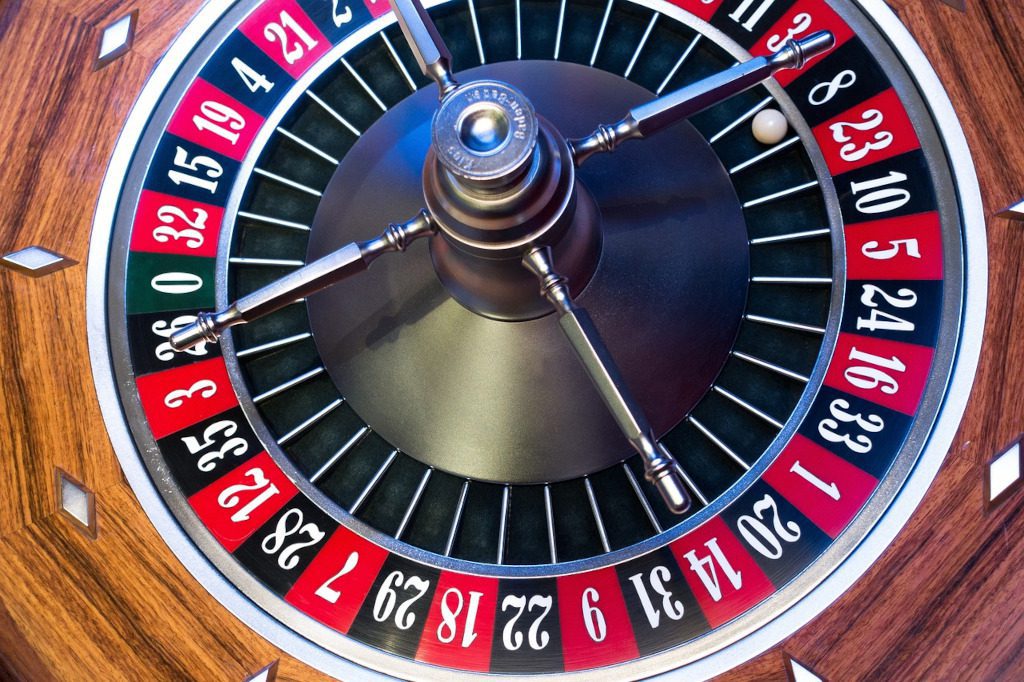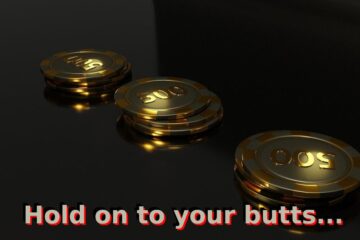How To Play Roulette

Roulette is an excellent game of chance offering better odds than most casino games. In this article I will outline the basics on hot to play roulette and perhaps prevent you from making the same mistakes I did.
Roulette is simple & complex at the same time.
There are three components to roulette, they are the Wheel, the Ball, and the Table.
The Wheel contains the numbers 0 – 36 if you are playing European Roulette (the original game). American casinos butchered the game by adding 00 (double-zero) to increase the house edge, and they have not introduced 000 (triple-zero) games too. Whenever possible always play European Roulette.
The Roulette Wheel
Roulette croupiers will spin the wheel either clockwise or counter-clockwise. It doesn’t spin very fast, perhaps 1 or 1.5 full rotations per second.
While the wheel spins the ball will be rolled around the outer edge in the opposite direction. For the game to be considered valid the ball must complete 3 full revolutions before it departs the outer wall. When playing roulette you need to keep an eye on ball timing and if you see inconsistencies stop playing and tell someone. The casino expects you to follow the rules and you can reasonably expect them to do the same.
Roulette Frets or Canoes
There are 8 “canoes”, often shaped like diamonds, between the outer wall and edge of the wheel. Canoes are designed to interfere with the free rotation of the ball, adding an additional layer of randomness & fairness for the player. The ball will often bounce off a canoe before landing in a number pocket.
Every second canoe is rotated 90 degrees to the previous canoe.
While an experienced & highly skilled Roulette Croupier can influence the outcome of a spin and often place the ball where they want it, or very close, the canoes make it more difficult.
Canoes are further apart on larger wheels and are easier for croupiers to avoid.
Wheels can be rotated in either direction for a game to be valid.
The Roulette Ball
Back in the earlier days of roulette the ball was made of ivory but now are more likely to be made of other materials.
Sizes of the playing ball are tailored for the diameter of the roulette wheel being played.
Balls tend to rotate around the wheel casing, in the opposite direction of the wheel, much faster than the wheel is spinning. A ball must complete 3 full rotations for a game to be valid.
The Roulette Table
The roulette table is where bets are made using gambling chips and are often covered in velvet. Table can be a variety of colours.
Before playing checkout the minimum bet on a table. In many cases different coloured tables have different minimum bets. Different coloured tables can represent either a 0 or 00 game. Casinos make single-zero game appear more expensive, thereby pushing you towards the 00 or 000 games. Remember your odds of winning are reduced on 00 games. See this article for my personal experiences with coloured tables.
The table is presented with possible outcomes, 0 – 36, in numerical order.
Betting on Roulette
Where you place your chips dictates what your bet is. If you place chips directly inside a number box then you are betting on that number coming up. If your magic number comes up you win 35:1. For example, a $5 wager on 27 Red pays $175 + original bet. So, you get back $180 if you selected a single number.
The odds of winning on a single number is 37:1 on European Roulette.
There are various bets available from choosing 1 number down to even-money bets. Even-money bets are Red/Black, Odd/Even, and 1-18/19-36. On a $5 bet you get a total of $10 back.
The Roulette betting structure prevents people from betting on every number. If you put $5 on every number, 0-36, is designed in such a way that betting on every number it would cost you $185 and you would win $180.
Because of the green square, which is 0, betting on Red/Black, Odd/Even, or 1-18/19-36, is not a 50/50 shot at glory.
If you want more info on each possible wager check this out.
Look at the Roulette Wheel & Table
If you look at the wheel carefully you should immediately notice the numbers are not in numerical order. Further investigation reveals the numbers on the roulette table do not alternate between red & black like they do on the wheel. This randomisation adds further difficulty to the game.
While you may successfully predict the region of the wheel where the ball will land, it is more difficult to equate that with a similar region on the table, both numericaly and colour. There is no real desirnable pattern. See the following text from the Roulette entry on Wikipedea;
The pockets of the roulette wheel are numbered from 0 to 36. In number ranges from 1 to 10 and 19 to 28, odd numbers are red and even are black. In ranges from 11 to 18 and 29 to 36, odd numbers are black and even are red. There is a green pocket numbered 0 (zero).
Wikipedia
Always set a Budget
Setting your budget is very important when playing roulette. Never lose site of the fact you can lose everything in a single spin and never convince yourself your number is just around the corner.
Decide before playing how much you are willing to lose and once gone, just walk away and play another day.
In addition to your loss budget also consider how much you want to win. If you have a starting balance of $500 and want to double it, then walk away when you have $1,000. There is always a losing streak not far behind a winning streak.
Most importantly gamble responsibly and only bet what you can afford to lose.
Happy Roulette Adventures!
